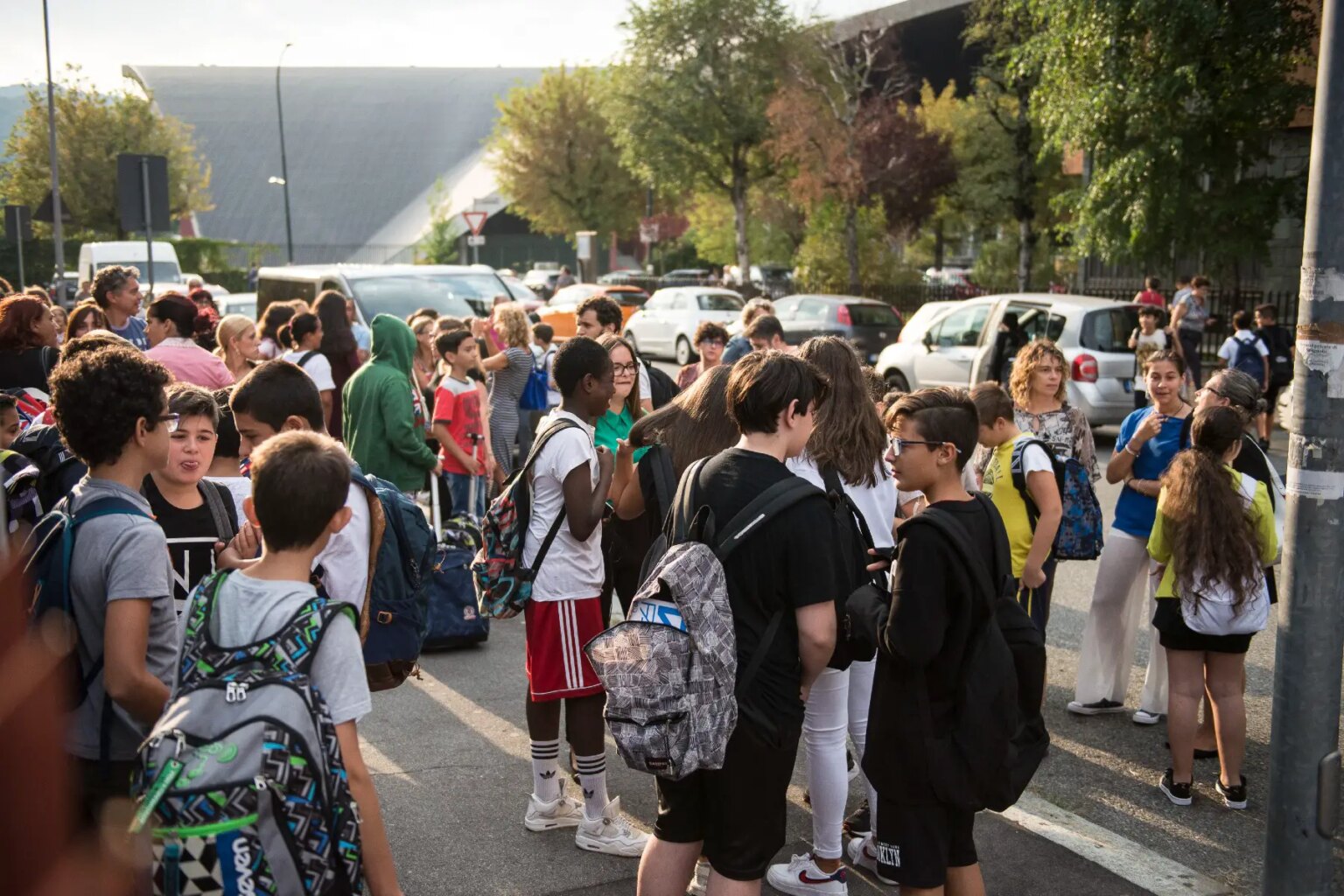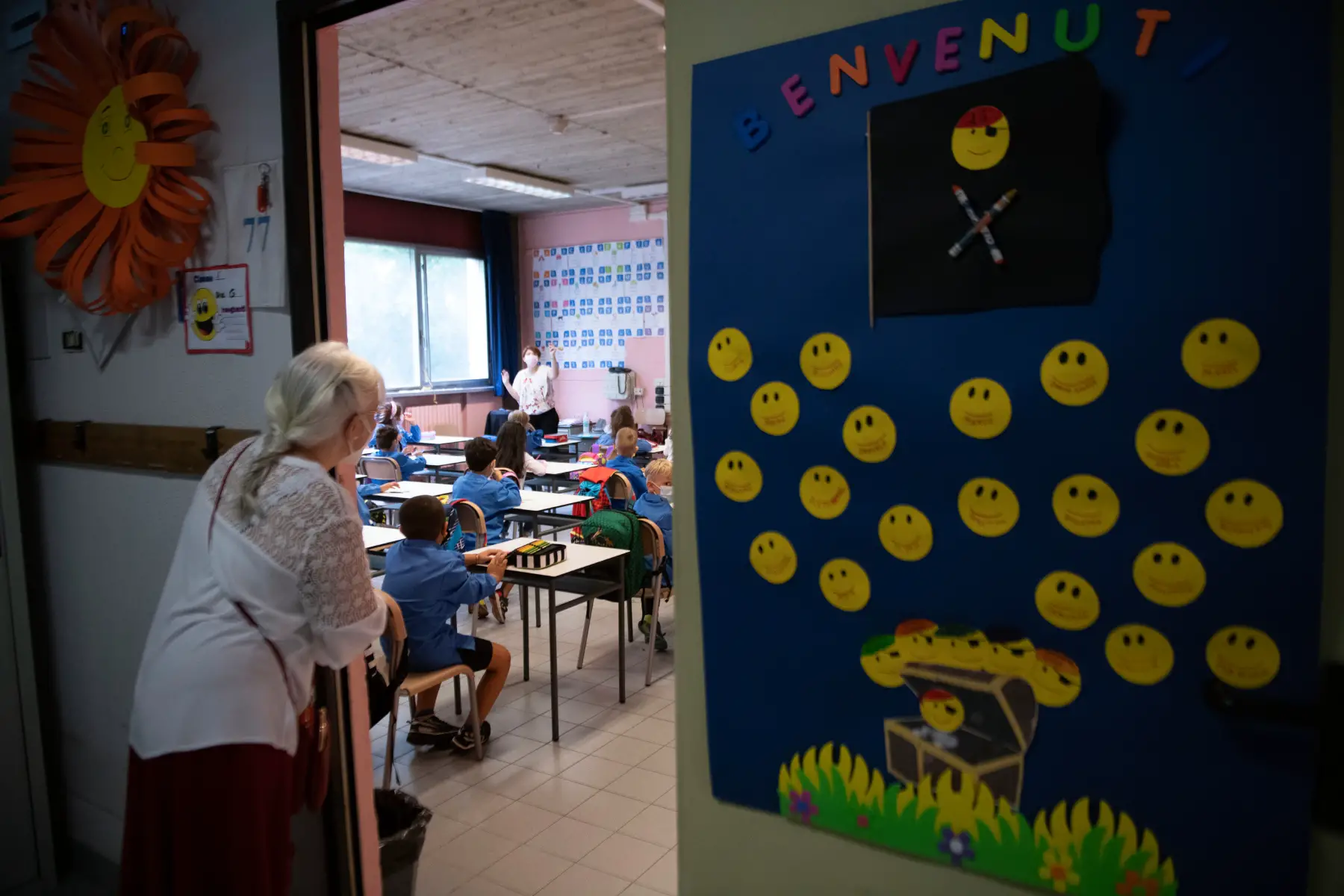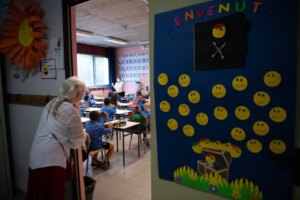Finding a school for your children can be overwhelming, especially in a new country. Parents moving to Italy have a lot to consider, such as the location, fees, instruction language, curriculum, and extracurricular activities. Still, this process doesn’t need to be challenging.
We’ve covered all the information you need to help you choose a primary school in Italy, including:
Moving2Italy
When relocating to Italy, get expert help from Moving2Italy on taxes, work permits, and setting up a business. They also provide personalized support for immigration, social security, and residence, helping you navigate your new life abroad. For assistance with fiscal and immigration matters, contact Moving2Italy.
The primary education system in Italy
Most Italian children will attend kindergarten (scuola dell’infanzia or, more commonly, asilo) from the ages of 3 to 5 (PDF, source: in Italian). After that, school becomes mandatory until they are 16 years old.
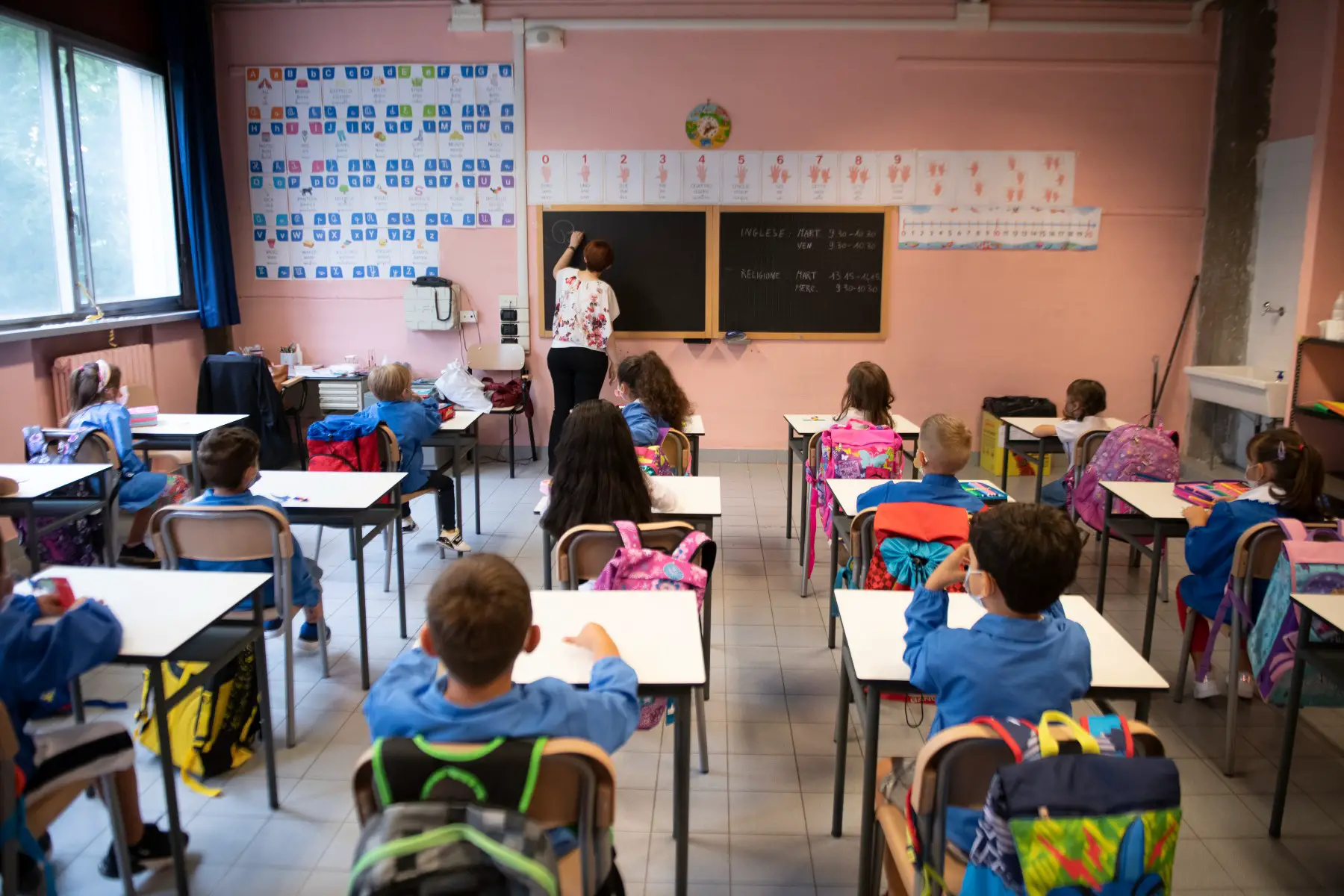
During the first cycle of education (primo ciclo di istruzione), children are enrolled into primary school (scuola primaria, ages 6–11) and lower secondary school (scuola secondaria di primo grado, ages 11–14).
Although the majority of primary schools in Italy are state-run (scuole statali), there are also non-state schools (scuole non statali), such as:
- Charter schools, also known as equal schools (scuole paritarie)
- Private schools (scuole private)
- International schools (scuole internazionali)
Primary schools are taught in Italian but allocate time to learning English, French, or Spanish.
Public primary schools
In Italy, all children are entitled to education, regardless of their citizenship or nationality. Minors with refugee or international protection statuses are also more than welcome. However, the law states that classes are only allowed to have up to 30% non-national children enrolled.
Italy has more than 14,800 public primary schools (PDF in Italian). In 2021, they taught over 2.3 million students, including more than 100,400 pupils with disabilities.
Classes usually have a minimum of 15 and a maximum of 26 children. If the class size is less than 15 students, creating multi-level classes is also possible. These accommodate between eight and 18 children and teach, for example, years 3–4.
Schools located on small islands, mountain communities, or areas of linguistic minorities have to have at least 10 pupils. Classes that welcome children with severe disabilities generally have fewer than 20 pupils.
Unlike charter and private schools, the Italian government funds public schools, making these accessible to all residents. Parents and guardians tend to contribute financially for necessities such as food, materials, mandatory school insurance (assicurazione Inail scolastica), and additional activities. So, include these when you budget for your cost of living expenses in Italy.
Educational expenses are tax deductible, up to €800 per child.
Although these fees are largely voluntary, in practice, it proves mandatory if you want your child to enjoy a full primary school experience.
The curriculum in public schools
Primary schools in Italy run from Monday to Friday. Parents can choose their child’s school timetables depending on availability. For example, schools can only offer 24-hour weeks if at least 15 pupils are enrolled in the class.
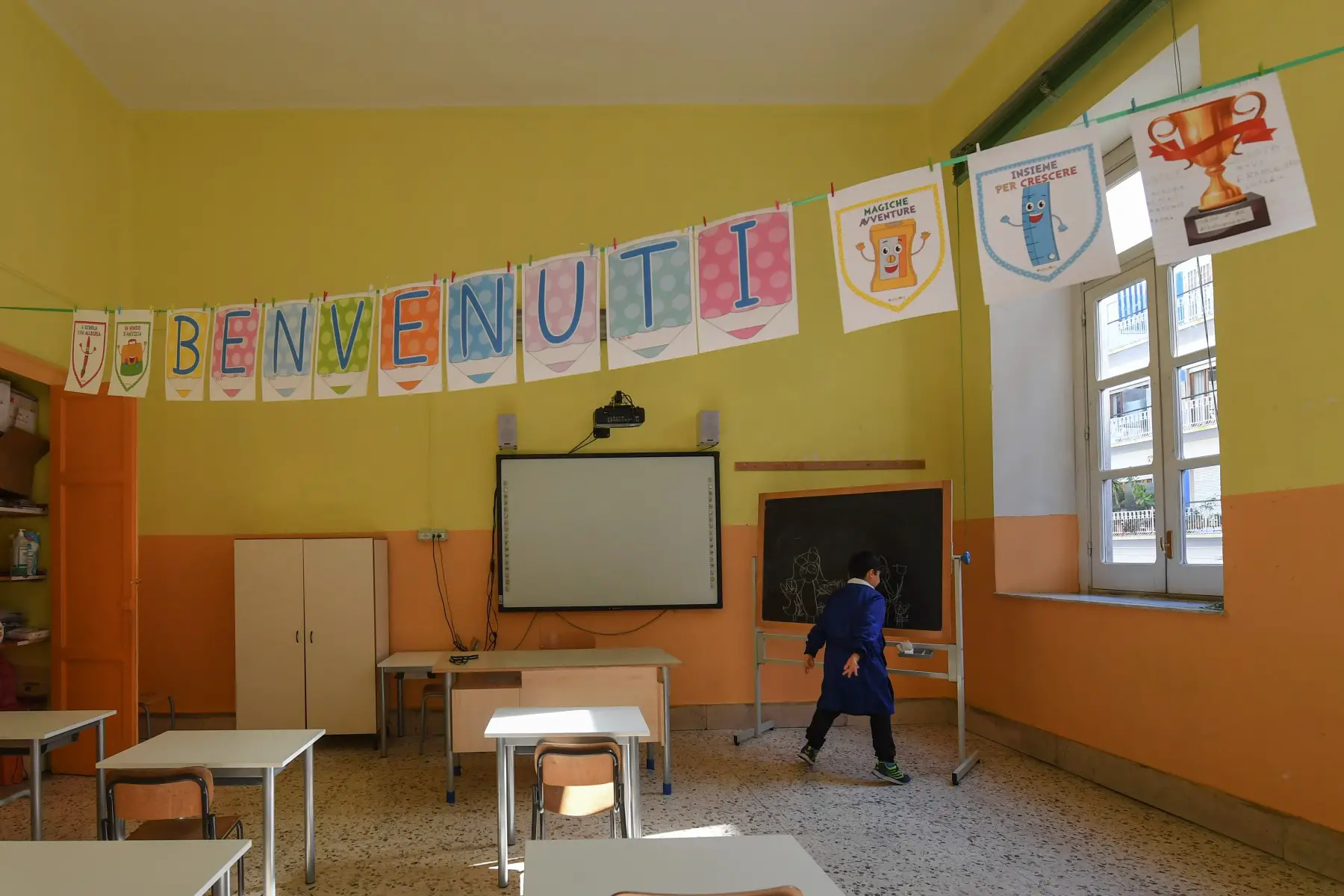
Scheduling options are:
- 24 hours per week
- 27–30 hours per week
- 40 hours per week
Most parents (42%) choose to enroll their children for the total 40 hours (tempo pieno). These classes run from 08:30 to 16:30 and include lunch.
In Italy, the school year (calendario scolastico) starts in September and ends in June. However, the exact dates vary according to the region. There are several school holidays, including Christmas, Easter, Epifania, and Republic Day (Festa della Repubblica Italiana).
Main subjects
The Italian Ministry for Education and Merit (Ministero dell’Istruzione e del Merito – MIM) has set guidelines for the national curriculum. It includes core subjects such as:
- Italian
- English
- History
- Geography
- Mathematics
- Science
- Music
- Arts
- P.E. (at least two hours per week)
- Technology
- Civic education
Children can also choose two hours of catholic lessons per week. If they – or their parents – opt out of these classes, the school offers alternative subjects and assisted individual studying. Also, if they do not attend these classes, they can arrive later or leave earlier, depending on where these are scheduled on the timetable. Extracurricular activities vary per school but can include theater, judo, and dance.

Since 2022, primary school students in Italy no longer receive grade report cards (pagella). Instead, teachers will evaluate students through a descriptive assessment. These have four different learning levels with corresponding letters:
| Symbol | Grade Level |
| A | Advanced (avanzato) |
| B | Intermediate (intermedio) |
| C | Basic (base) |
| D | In the learning phase (in via di prima acquisizione) |
The levels refer to the results achieved by each student depending on the goals of the discipline. For example, students at level A can autonomously complete tasks in known and unknown situations and use resources given by the teacher or discovered independently.
Students with learning difficulties or disabilities – that may affect their schooling – are evaluated according to specific learning plans.
The pros and cons
There are many benefits to public schools; the most obvious is that they are free and open to everyone. Public schools are a melting pot of backgrounds, incomes, and religions. As such, children are more exposed to a diverse student body, which reflects society and is great for their personal development.
Another great benefit is the sense of community. When children go to a local public school in their neighborhood, they can walk to the school and make friends that live nearby. Plus, for international children, local schools are a great and accessible way to integrate into the local culture and learn Italian, which has the added benefit of early bilingual education.
That said, public schools also have some disadvantages. Often they will have bigger classes and fewer resources. Non-state schools can provide a higher quality of education with more teachers and better facilities.
Applying to public primary schools
All children who have turned six by the end of the year (31 December) must be enrolled in a primary school.
You can register your child using an online form on the MIM website. This form is usually available from January or February and allows you to choose your preferred school. International parents can also enroll their child directly at the school at any time during the school year.
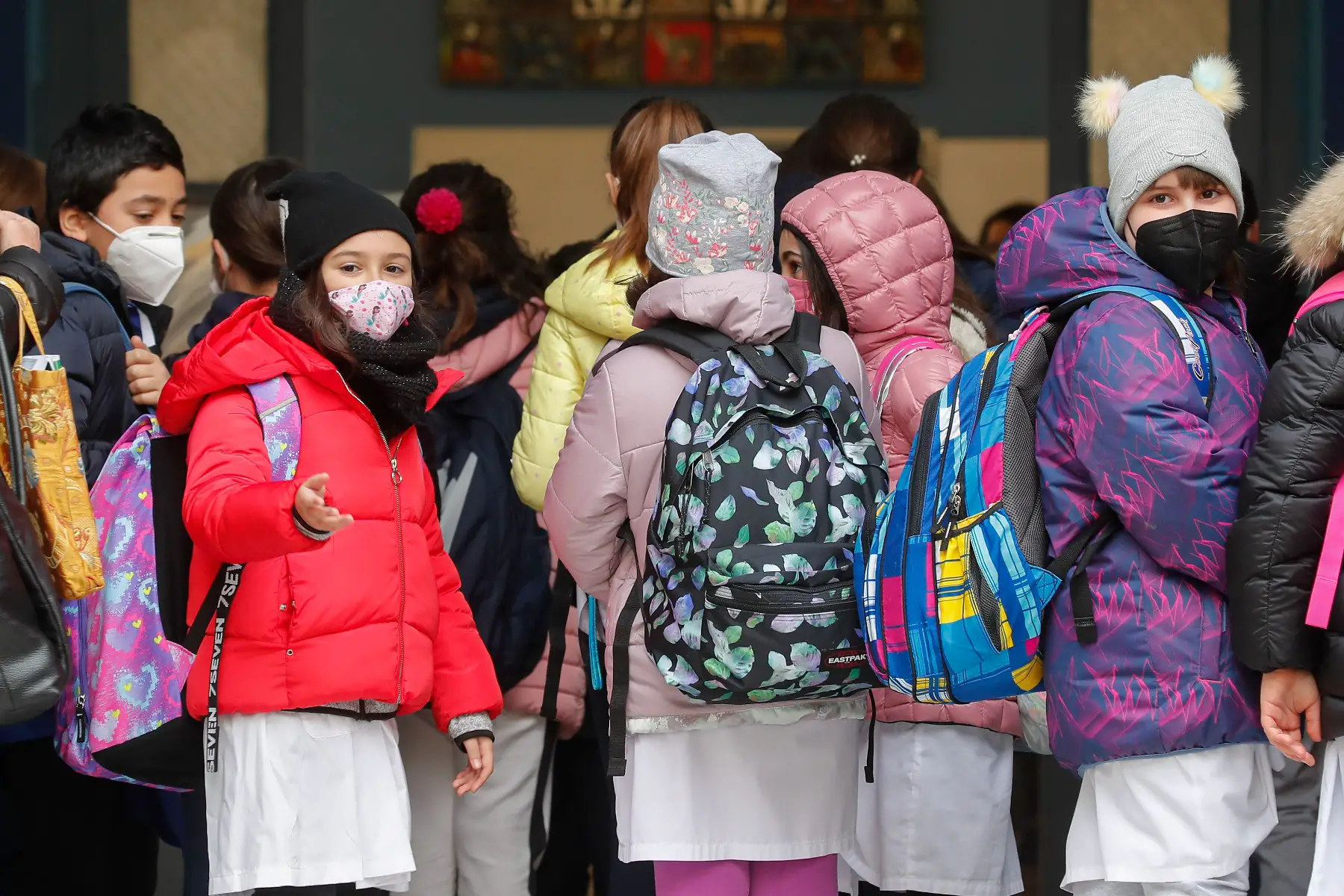
For online registration, parents and guardians must identify themselves digitally. This could be through:
- Public Digital Identity System (Sistema Pubblico di Identità Digitale – SPID)
- Electronic identity card (Carta di Identità Elettronica – CIE)
- eIDAS
To apply, you’ll need to provide the following documents:
- Personal information of the student (documentazione anagrafica), e.g., name, date of birth, address, and possible (learning) disabilities or health issues that may affect learning or require extra support at school
- Healthcare records (documenti sanitari), e.g., vaccination records
- School records (documenti scolastici)
Private primary schools in Italy
Although most primary schools are public, some parents enroll their children in private schools. In 2019, over 1,400 private schools taught almost 170,000 students. On average, class sizes were between 15 and 20 students.
Private schools have tuition fees (tasse di iscrizione) and voluntary contributions (contributi volontari). The costs differ per school depending on what they offer. You can check the school website to see the full amount. When you file your income taxes in Italy, remember that educational expenses are tax deductible up to €800 per child.
Private schools often teach according to a religion or a particular teaching method. Schools with alternative learning methods deviate from traditional curricula and class settings. For example, they will focus on gentle learning or the child’s autonomy. The most common education philosophies in Italy include Montessori, Steiner Waldorf, and Without a Backpack (Senza Zaino).
The curriculum in private schools
Charter schools – or equal schools – carry out a public service and follow the national guidelines for the curriculum. They are comparable to public schools in every aspect, hence the name. Although they are not funded by the government and parents are expected to pay tuition fees, they can issue legally valued qualifications.
Private and international schools have complete autonomy regarding curriculum, timetables, activities, and teachers. As such, their qualifications do not have legal value in the country.
Religious education
As Catholicism is the main religion in Italy, religious schools are usually Catholic. Still, there are some Muslim and Buddhist primary schools. In 2019, there were just over 1,000 Catholic primary schools in Italy.
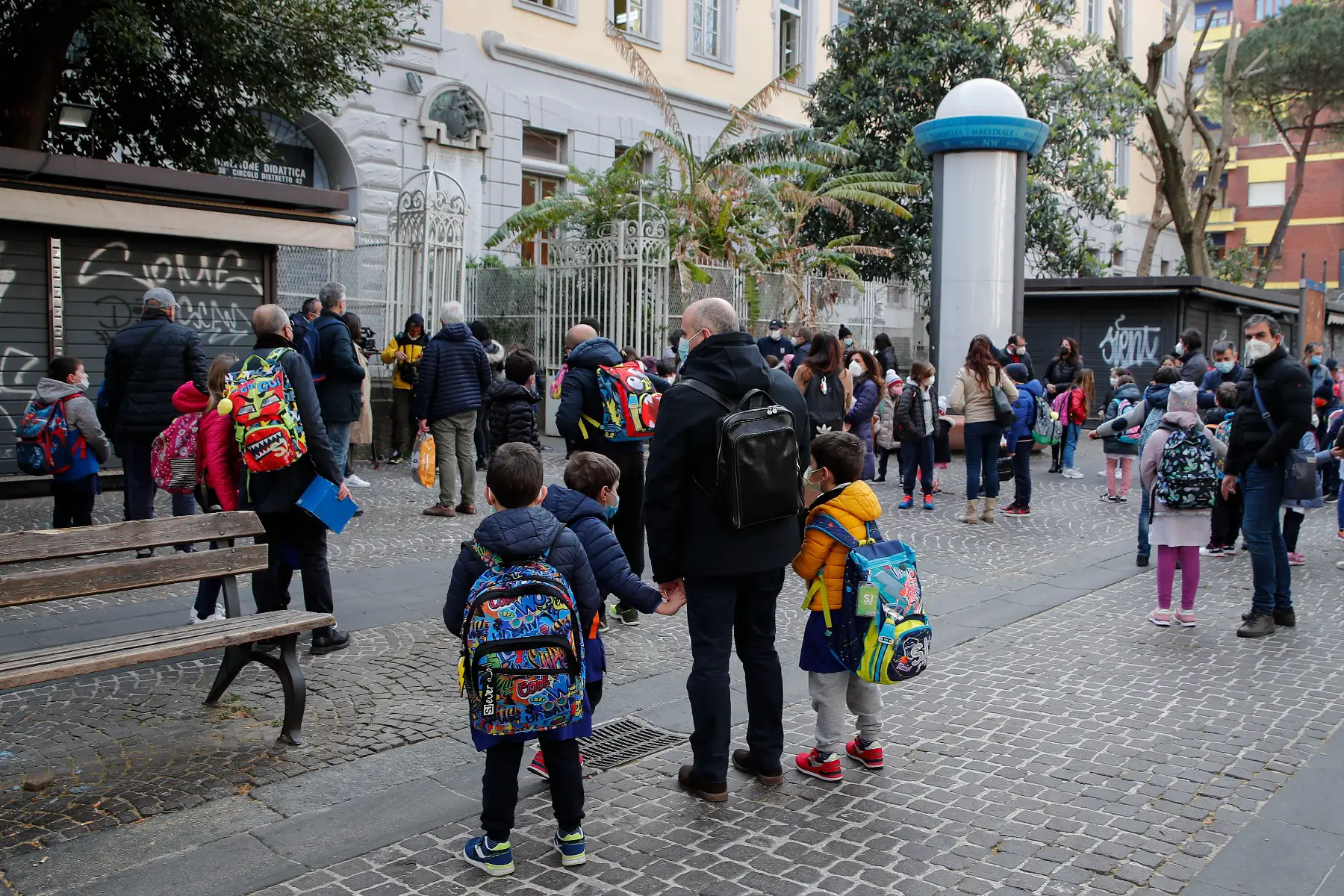
Despite their religious undertones, these schools don’t require children to practice the religion. All children are allowed to attend. Each school decides the frequency of faith classes and the focus given on religion.
Montessori schools
There are just over 200 Montessori schools in Italy. These schools practice hands-on learning and independent activities. Subjects include cosmic education, the language of objects and images, algebra, and relative numbers.
Steiner Waldorf approach
Another teaching method is Steiner Waldorf. The country has about 60 schools following this principle. They believe in the child’s natural growth and development without external interference. Since humans are composed of body, spirit, and soul, children should learn to develop their cognitive, emotional, and physical being.
Senza Zaino (Without a Backpack) schools
Founded in Tuscany, Senza Zaino schools instill hospitality, responsibility, and a strong sense of community. It is Montessori-inspired. Although they follow the national curriculum guidelines, these schools focus less on textbooks or homework (carried in backpacks to and from school).
Instead, this method encourages a particular classroom organization with functional furniture and workstations where children learn autonomously using tactile teaching tools.
International schools in Italy
Italy has a wide range of international schools, including American, British, Japanese, Swedish, French, Spanish, German, and Swiss.
They all follow their country’s curriculum and teach subjects in their primary language (e.g., English, French, Spanish, German). Usually, they also have Italian classes and offer a third language as well. Extracurricular options vary according to the school but can include music, sports, and arts.
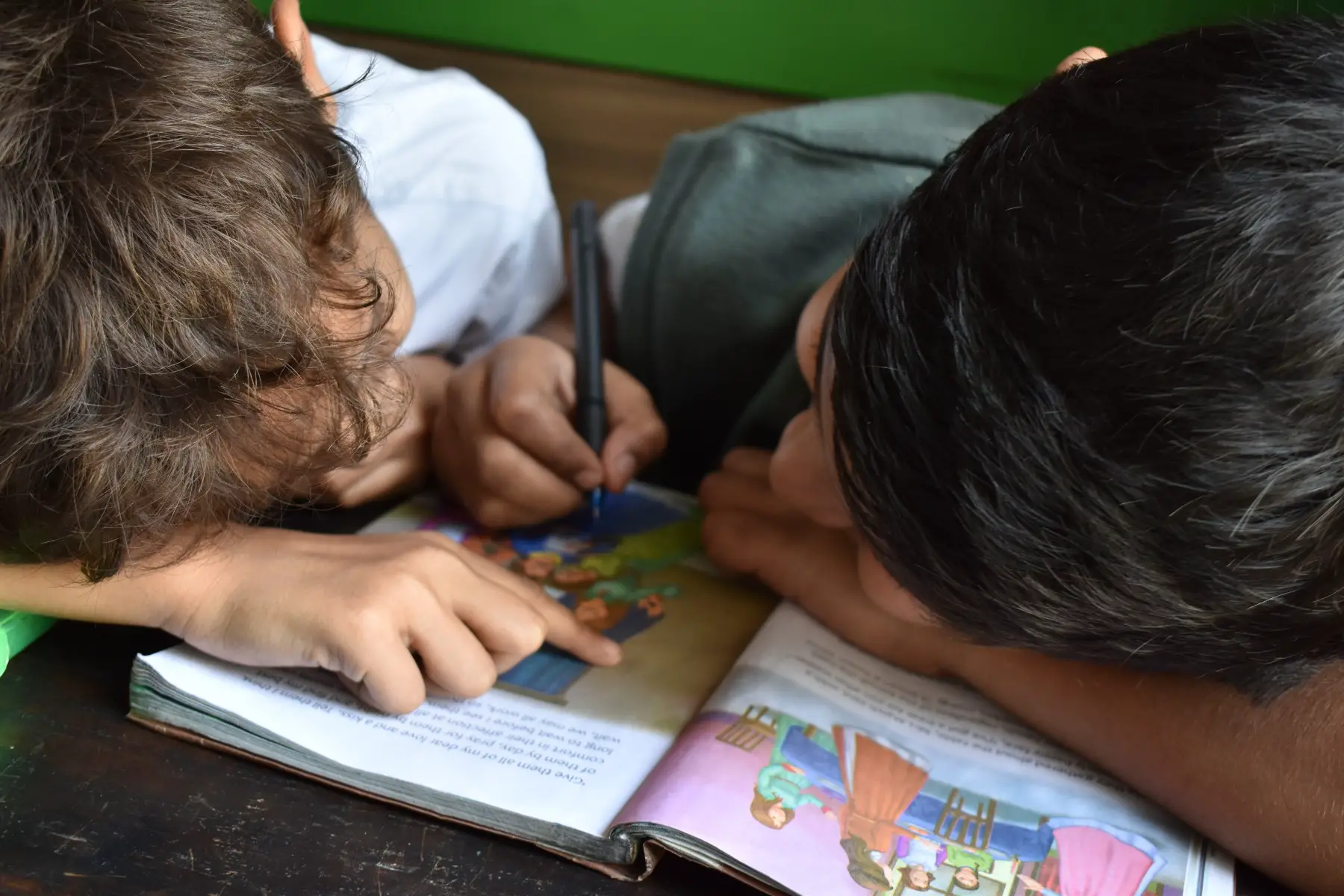
International schools in Italy include:
- American International School of Florence in Florence (Firenze)
- American School of Milan in Milan
- Florence Bilingual School in Florence
- German School Rome (Scuola Germanica Roma) in Rome (Roma)
- International School in Genoa in Genoa (Genova)
- Lycée Stendhal di Milano in Milan (Milano)
- St. George’s British International School Rome in Rome
- Scuola Europea di Varese (Scuola Europea) in Varese
- World International School in Torino
Enrolling your child at an international primary school has its benefits. For one thing, your communication with the school will be easier if in your native language. Moreover, children won’t lose touch with their culture while immersed in a new one. School facilities are often better, and the level of education is higher than in state-run schools.
On the other hand, international schools tend to be very expensive and are usually only available in big cities across the country. Tuition fees range from €7,500–25,000 per year. Another disadvantage is that the children and their families may not integrate fully into the local community.
Hospital schools and homeschooling
If your child is in hospital or can’t attend school due to an illness, they can still go to class and maintain links with their school life environment through hospital schools (Scuola in Ospedale) and homeschooling (scolarizzazione domestica).
There are just over 200 hospital schools in Italy. In 2020, an estimated 41,000 pupils were enrolled in these, 70% of which attended primary school.
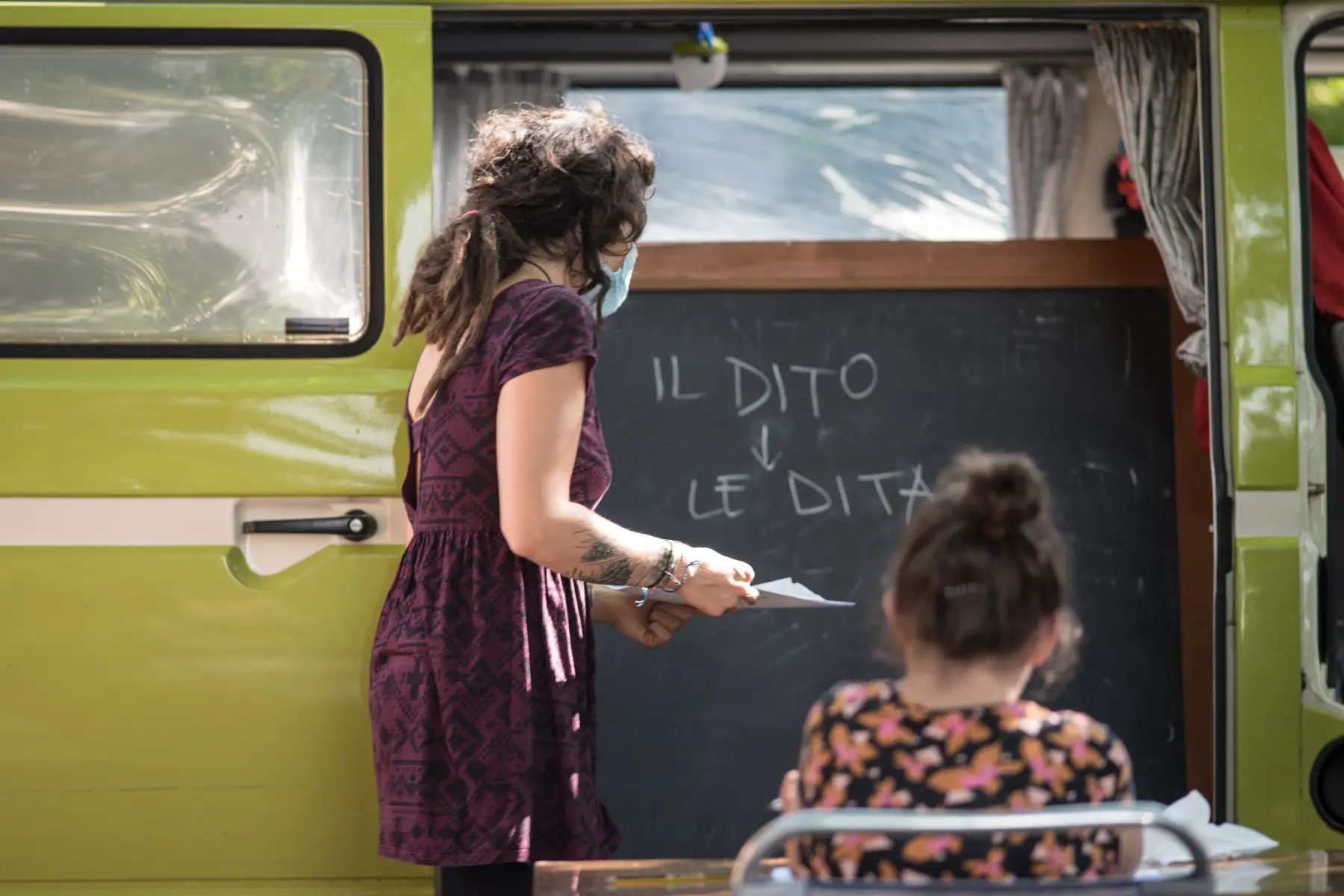
Homeschooling is also allowed in Italy – unlike in the Dutch education system – although not many people do it. You must be able to prove you have the technical and economic capacity to teach your children at home. You must also provide a personal curriculum (in Italian) and send in a written request for the annual school exam.
Because children do their exams at schools, they will earn legally recognized qualifications.
Useful resources
- MIM – government website of the Ministry of Education and Merit with all information about the educational system in Italy
- International Schools database – a comprehensive list of international schools in Italy
- HSLDA – organization offering resources and support for homeschooling in Italy
